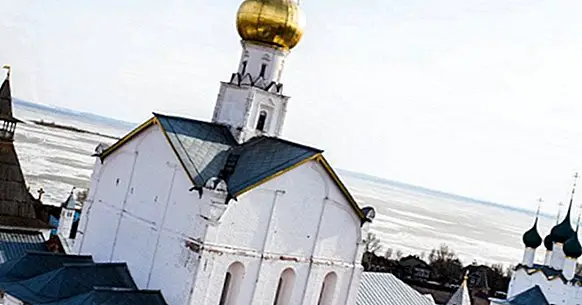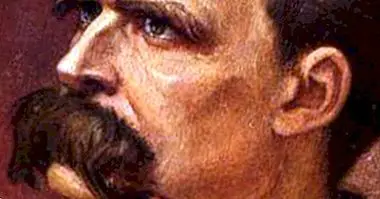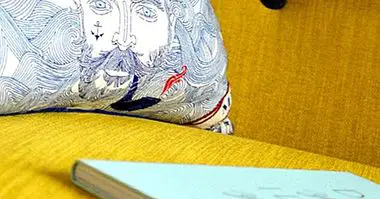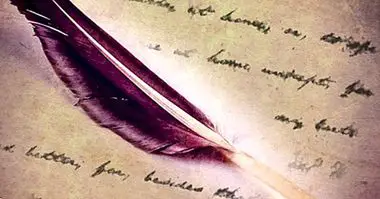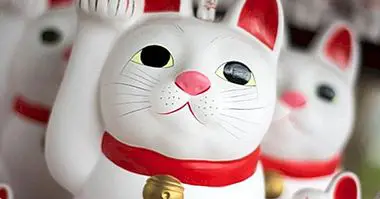The 10 best Russian legends (with explanation and meaning)
To speak of Russia is to speak of the country with the greatest geographical extension in the world, which has been the scene of a great number of important events throughout the ages. It is therefore a country with a long history, which has its own myths, legends and customs. That is why throughout this article we are going to talk about a small selection of the best-known Russian myths, tales and legends .
- Related article: "The 10 best Spanish legends (ancient and current)"
10 interesting Russian legends
Below we show you a series of ten legends, myths and stories from Russia, some of which are also shared by other Slavic peoples.
1. The legend of the Matrioshka
Legend has it that there was once a humble carpenter named Serguei who needed wood to work . One day when he was having difficulty finding a valid wood, he found a perfect trunk which he took home.
Serguei did not know what to do with him, until one day the idea of making a doll came to mind. He did it with so much love and so beautiful that after finishing it he did not want to sell it, and gave it the name of Matrioshka. The young man greeted his creation every day, but one day and surprisingly it returned his greeting.
Little by little they established a communication and a good relationship, but one day the doll indicated her sadness because all the creatures had children, except her. The carpenter told her that if he wanted her she should remove the wood from inside, something she accepted.
Serguei made a smaller copy, which he called Trioska. But with time Trioska also wanted to have children, so with part of her wood she made another smaller version: Oska . The situation was repeated with her, with what Serguei would make one more doll, this time with a mustache and with a masculine aspect so that she did not have a maternal instinct. The latter would be called Ka. Then, he put each of the dolls inside his parent. Days later, however, and to the despair of Serguei, Matrioshka and all her offspring left and disappeared without further ado.
- Maybe you're interested: "The 10 best Chinese legends"
2. Baba Yaga
One of the best-known creatures of Russian and Slavic legends is the witch Baba Yaga, an elderly woman (although other versions consider her a goddess) who lives in the woods. The legend says that this being, which is said to feed on children, It has iron teeth with which you can easily tear meat .
However some of their representations are not always negative. It is said that it keeps the waters of life and death, and lives in a house which moves with huge legs of duck and in whose stockade can be seen numerous human skulls. Also that rejuvenates every time you drink a tea made with blue roses, rewarding whoever brings them. She is considered the representative of the boundary between life and death .
3. The ghost of Zhuzha
A relatively recent Russian legend, centered in Moscow, tells us about love and death.
The legend tells us about Zhuzha, a woman who for years had been in love with a millionaire . One day, while walking through Kuznetski Most, he heard a child delivering newspapers shouting that his beloved had taken his own life. Just when he got out of his carriage and went to look for more information, he was run over and died.
However, the days passed and the boy who sold the newspapers appeared dead and strangled with a woman's half, the one Zhuzha wore on the day of his death. Soon those who had published the supposed death of the millionaire also died. Since then there have been several testimonies of the ghost that runs through Kuznetski Most, in Moscow. It is said about who sees it that it will possibly have the loss of a close male person.
4. The Legend of the Snow Lady
Like many other peoples facing frigid temperatures, Russians also have a legend that refers to the cold. In his case also refers to infidelity and betrayal. It is about the legend of Sgroya.
This apparently young and attractive woman is a furious spirit that hates the male gender due to the deception that her partner suffered, although in other versions she is a deity that punishes acts of infidelity.
Sgroya appears on the roads offering his attentions to the men who cross with her, seducing them. From accepting her invitations and kissing her, she will become an icicle and take her victim to death by freezing, or else she will drive her crazy.
5. The legend of the city of Kitezh
Some Russian legends tell us about the invasion they suffered in antiquity on the part of the Mongols.Specifically, one of them refers to the disappearance of the city of Kítezh.
According to legend, Prince Vladimir founded two cities, one called Maly Kitezh and another that would receive the name of Bolshoi Kitezh . However, the Mongols invaded the first one, making prisoners during the process, who ended up confessing how to get to the second.
Once they arrived at their surroundings, they contemplated that this city had no walls or defensive structure, which they attacked immediately. The desperate citizens prayed for their salvation. However, before the assailants arrived in the city, the waters were swallowed up, submerged in Lake Svetloyar and saving it from attack, as well as making it invisible. Since then it is said that only the purest can find this city.
6. Prince Ivan and Koschei the Immortal
Legend has it that Prince Ivan Tsarevitch promised his parents, before he died, that he would seek a husband for his three sisters. These are pretended by the Eagle, the Falcon and the Raven, with which they end up marrying and going to live.
With the passage of time the prince, alone, decides to undertake a trip in order to visit his sisters and brothers-in-law. On his way he meets the remains of an annihilated army, which had fallen before the power of the warrior Marya Morevna . The prince met this woman, falling in love and eventually getting married and going to live at home.
However, over time broke out a war in which Marya Morevna decides to participate, leaving the prince at home with the warning not to open his closet to exist in him a secret that must remain there. However, the prince, curious, decided to open said closet. In it he found a chained man named Koschei, who asked for water. After giving it to him, suddenly he broke his chains and vanished magically, after which he kidnapped the prince's wife .
The prince decides to go in his search, passing on his way through the houses of his sisters and brothers-in-law and leaving behind him various objects. He found the castle of Koschei and took his beloved, but was caught by the sorcerer and his swift horse. He returns to take Marya Morevna, forgiving the prince because he had quenched his thirst when he was chained. The prince repeated the rescue twice more, being always caught by the sorcerer, and in the recipe occasion it ended up dismembering him and throwing him into the sea.
However, Ivan's brothers-in-law observed that the objects that he left them, of silver, darkened, to which they went and later managed to bring him back to life thanks to the waters of life and death. The prince then went to Baba Yaga to give him a horse faster than Koschei, to which the witch decides that if she manages to watch her mares three days she would give it to him, although otherwise she would kill him. He managed, with the help of several animals (which had promised to help him if he did not eat them), his task despite the fact that the witch had rigged it. However, she wanted to kill him anyway, something that made Ivan steal the horse and flee.
After the steed, Ivan rescues his wife and during the flight kills Koschei with a kick of his horse. After that, he dismembers the body and sets the pieces on fire. Once free, the couple was able to return home and live happily.
7. The seven giants of the Urals
One of the considered natural wonders of Russia is Man-Pupu-Nyor, which also has its own legend.
Legend has it that the mansi people lived in those mountains . The village leader had two sons, one of whom was a girl who fell in love with one of the giants in the area, named Torev. He asked her father for his hand, but the father refused.
Furious, the giant called five brothers and together with them he tried to kidnap the girl and started attacking the town. The inhabitants fled, asking for help from the spirits. The next day the other of the leader's sons commanded a group of warriors to confront them, bringing the young man a magical sword granted by the spirits and a shield.
The young man raised the sword, and from it came a light that turned the six giants into stone, but against its use implied that its bearer would also do so. This explains why there are seven mounds observable in the Urals .
8. The legend of the ghost bride
It is likely that many of the readers of this article have seen the movie "The Corpse Bride" by Tim Burton. What many will surely not know is that their story is based largely on a Russian legend or tale. And this in turn is based on the murders of Jewish women on their way to their wedding already dressed in the wedding dress, as well as the fact that there was a tradition of burying the dead with the clothes they had died with (what these murdered women were buried in their wedding dresses).
Legend has it that one day a young man who was going to marry was traveling with a friend to the town where his future wife was staying, meeting a branch that resembles a finger. The young man and his friend, playing, placed the engagement ring on the branch and subsequently made the vows and rehearsed the wedding dances. Suddenly, the earth moved revealing that the branch at the bottom was a finger, which was part of a corpse dressed as a bride.
This corpse looked at them expectantly and, observing that they had celebrated the wedding, he said he wanted to claim his rights as a wife . Both fled to the town of the future wife, going to the rabbis to ask if the marriage was valid. While the rabbis debated, the dead woman arrived with them and returned to claim her husband.
In this also came the living girlfriend of man, who then learned of the situation and wept before the possible loss of his partner and children. Shortly after the rabbis left, determining that the wedding was valid, but also that the dead could not claim the living. It was now the corpse bride who wept and sobbed her inability to raise a family.
But the bride alive, feeling sorry, approached and embraced her, promising that she would live her dream and would have many children who would be two of them besides her husband. This reassured the spirit, which ended up resting in peace and happy at the same time that the couple could remarry and eventually have offspring, to whom they would tell the story of the spirit.
9. The island of Buyan
The idea of an earthly paradise is not exclusive to one or two religions but is shared by a large number of them, including Russians and other Slavs
In this sense, one of the best-known legends is that of the island of Buyan. This island it serves as a refuge for the Sun and the winds, as well as for travelers . We can also find on this island the healing waters generated thanks to the Alaturi stone and the Zarya maiden, who sews the wounds.
On the island also saves his soul Koschei the Immortal , who separated his soul from his body and placed it in a needle inside an egg which is inside a dish that is inside a rabbit, which in turn is in a trunk that is buried in the reaoces of a tree. If someone is done with that egg or needle, it has almost absolute power over the sorcerer, since if it were damaged Koschei would die.
10. The legend of Sadko
One of the Russian legends that make reference to a historical period even before the creation of Kiev is the bylina of Sadko, an old Russian epic and generally transmitted in verse.
History tells us how a young guslar (musician who plays the gusli, an old Russian traditional instrument) from Novgorod made his living playing, something he did with great skill. However, there came a time when other musicians came to the area and little by little Sadko began to lose customers, to the point of not being hired. One day, saddened by his poverty and before the fact that nobody hired him, he began playing on the shores of Ilmen Lake .
After going several times to touch the Ilmen, one day the god of the waters of the lake appeared to him. He told her that he had heard him play and wanted to help him in his difficult situation. He proposed that the next time he went to the city and they will call him to work, he had to make sure there were fish with gold fins on the lake , and to bet with the merchants on who these existed. The young man did so, and to everyone's surprise when the young man and those who had bet against him set sail in a fishing boat they found that, effectively, when collecting the nets they managed to catch a large quantity of gold fish.
With the fish and the profits obtained by the bet, the young man soon became a merchant of great wealth. However, one night when he was returning by boat, the young man played his music again. The waters shook, furious and about to sink the ship. Sadko thought that the god of the waters wanted him to share his profits (thanks to him won), so he threw several barrels with wealth without it having any effect. The sailors replied that maybe the god wanted a human sacrifice , and after raffling several times it always happened to Sadko.
The young man threw himself into the water and found the god, who wanted him to play for him in his palace. There, Sadko's music made the giant dance with great frenzy. But one day an old man came to the palace while the young man played, and told him that the power of the god's dance was causing great swells . Sadko decided to stop playing to avoid it, breaking the ropes as a way to justify himself.
After that he asked the god to return to his land, to which the god finally gave way. In some versions the god of the lake tries to offer him a wife to stay, to what as the old man warned him I can get away choosing the last and youngest of his daughters, with which he did not consummate and after what the deity He freed him from his service.
Bibliographic references:
Warner, E. (2005). Russian myths Editorial Akal.

